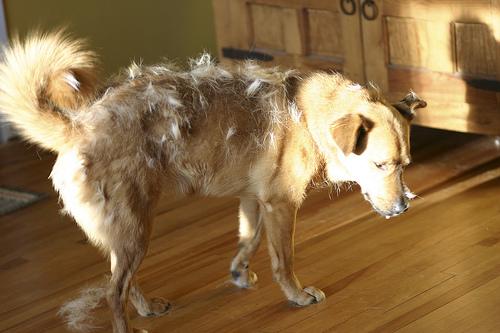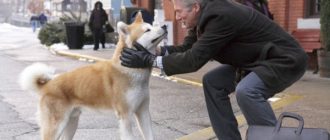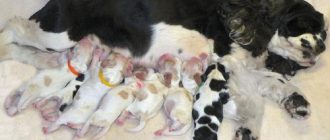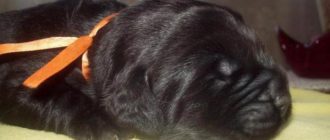Dog’s old and damaged hair and coat shed naturally. Shedding is a normal process in dogs, but the amount and the frequency of hair loss depends on the health of the dog and its breed. In addition, molting may depend on the season of the year, as many dense hair grows in the winter for dogs molt in the spring. Dogs that live at home, subject to shorter fluctuations in the thickness of the coat and molt like usually evenly throughout the year.

How can a dog molt be minimized?
Contents
Even though you cannot stop healthy and normal molting process, you can reduce the amount of wool in your home with regular combing. Your veterinarian or the groomer should advise you on the type of brush or comb, which is suitable for your dog’s coat type.
What to do if the dog has a strong molt?
What seems to be very strong molt may be normal a phenomenon for some dogs, but it may also be the result stress, poor nutrition, or a medical problem. Your vet should determine if your hair loss process is dogs part of the normal molting process or symptom any disease. Excessive molting can sometimes prevent using the right diet.
Quality pet foods include amount of all nutrients, therefore supplements are not necessary. But dogs with allergies or hypersensitivity may need to experiment with different brands feed to determine which one is best. For It is also recommended that you consult your veterinarian. which will give advice on what feed will be best meet the needs of your dog.
Severe hair and hair loss in dogs may be associated with the following reasons:
- Parasites (fleas or ticks)
- Fungal or bacterial infections
- Food and other types of allergies
- Diseases of the kidneys, liver, and thyroid gland adrenal glands
- Pregnancy and Feeding
- Use of certain drugs
- Self-induced molting due to excessive licking
- Cancer
- Immunopathological diseases
- Sunburn
- Irritant or corrosive
When should I contact a veterinarian?
If you notice any of the following symptoms, or if your dog’s skin problem persists for more than weeks, you need to consult your the vet.
- Skin irritation, including redness, swelling, bumps and rash
- Open sores
- Bald patches or thinning
- Dry, easy falling hair
- Scratch
- Continuous licking or rubbing






